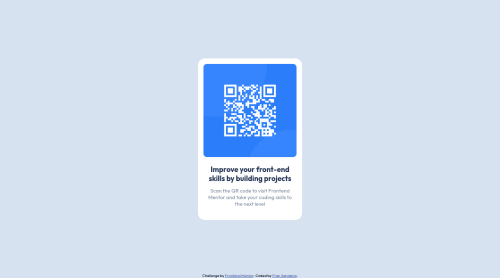Submitted over 3 years agoA solution to the QR code component challenge
QR component solution
P
@Fran-Sanabria

Solution retrospective
Hello, this is my second challenge, I am still improving day by day, all the feedback received
Code
Loading...
Please log in to post a comment
Log in with GitHubCommunity feedback
No feedback yet. Be the first to give feedback on Fran Sanabria's solution.
Join our Discord community
Join thousands of Frontend Mentor community members taking the challenges, sharing resources, helping each other, and chatting about all things front-end!
Join our Discord